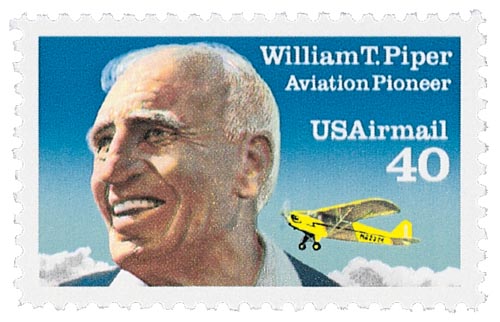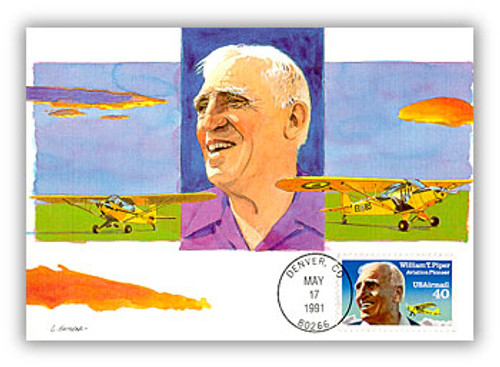
# C129 - 1991 40c William Piper
1991 45¢ William T. Piper
First City: Denver, Colorado
Quantity Issued: 182,400,000
Printed by: J.W. Fergusson and Sons for American Bank Note Company
Printing Method: Photogravure
Perforation: 11
Birth Of William Piper
From a young age, Piper worked on his family’s dairy farm. At the age of nine, he began helping his father’s oil business, repairing well pumps. Over time his father made enough money to move the family to Bradford, Pennsylvania.

Following the sinking of the USS Maine in 1898, Piper lied about his age so that he could join the US Army and fight in the Spanish-American War. After the war, he attended Harvard University. Piper graduated in 1903 with honors, earning degrees in business and mechanical engineering. During World War I, he reached the rank of captain in the Corps of Engineers.
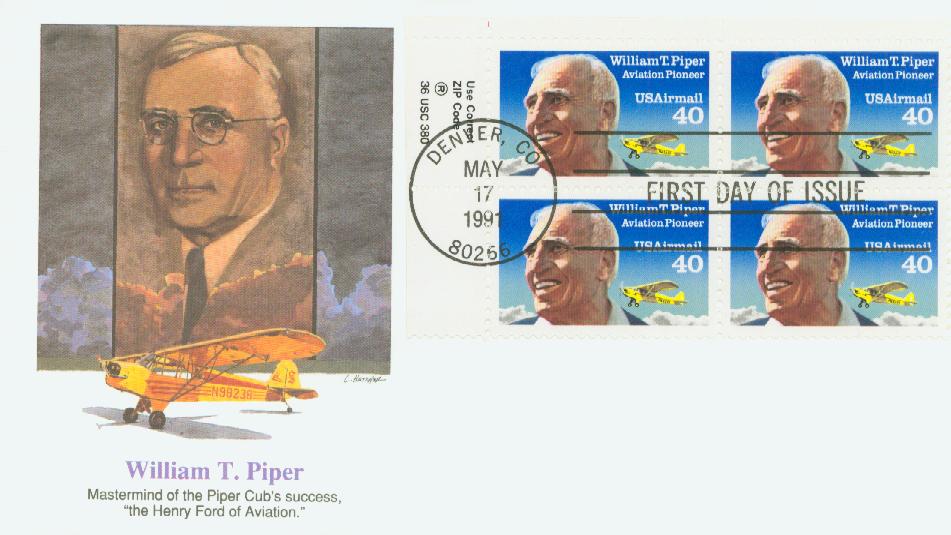
Piper then went on to earn his fortune in oil wells. Though he’s known for his contributions to aviation today, his entrance into the industry wasn’t planned. While working at an oil business in Bradford, Pennsylvania, Piper’s partner (without Piper’s knowledge) pledged $400 toward an airplane manufacturing facility. When the Taylor Brothers Aircraft Corporation was established, Piper was elected to the board. The Great Depression caused the company to go bankrupt. Piper was the only person to bid on it during the public sale. He bought the company for $761.
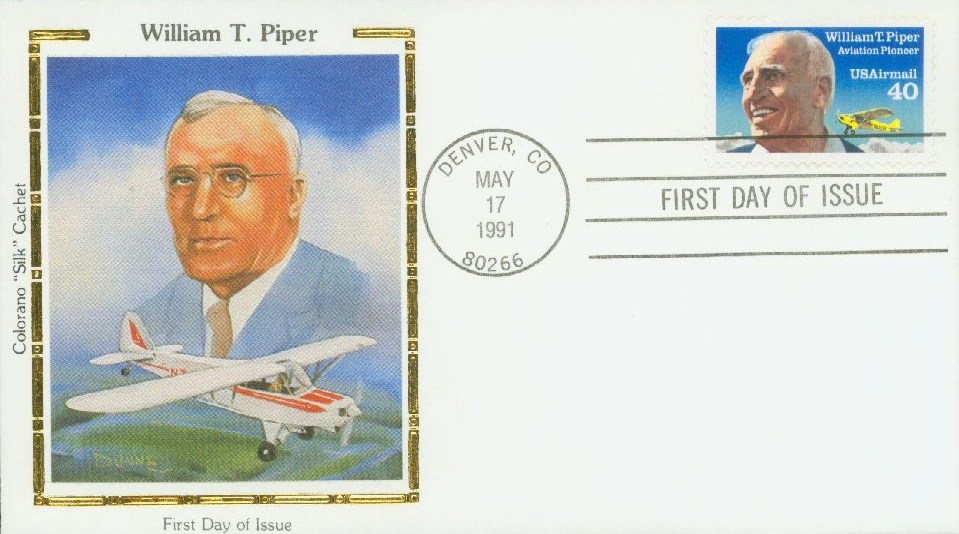
Soon after, Piper designed and built the Cub, a reliable, inexpensive aircraft. It cost $1,325 (about $51,200 in today’s wages) and included free flying lessons. Cubs became so popular, Piper became known as the “Henry Ford of Aviation.” In spite of the country’s economic hardship, the company grew, and Piper converted an old silk mill in Lock Haven, Pennsylvania, into the new factory for Piper Aircraft Corporation.
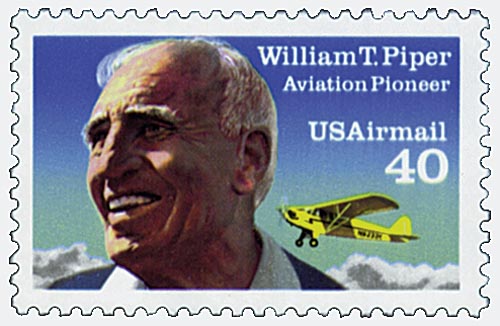
As World War II approached, President Roosevelt began a pilot training program using Cubs. During Army war games, the planes proved their worth by directing artillery fire and infantry. During this time, the planes were given the nickname “Grasshopper.” When the US entered the war, Piper’s planes joined the fight. In addition to directing firepower, Grasshoppers flew reconnaissance missions, some were modified as ambulance planes, and some were armed with bazookas to take out tanks or enemy artillery. By the time the war ended, four out of five American pilots had been trained on Piper Cubs. And the Piper Cub was the most-produced fabric-covered monoplane in history, with more than 20,000 built between 1938 and 1947.
1991 45¢ William T. Piper
First City: Denver, Colorado
Quantity Issued: 182,400,000
Printed by: J.W. Fergusson and Sons for American Bank Note Company
Printing Method: Photogravure
Perforation: 11
Birth Of William Piper
From a young age, Piper worked on his family’s dairy farm. At the age of nine, he began helping his father’s oil business, repairing well pumps. Over time his father made enough money to move the family to Bradford, Pennsylvania.

Following the sinking of the USS Maine in 1898, Piper lied about his age so that he could join the US Army and fight in the Spanish-American War. After the war, he attended Harvard University. Piper graduated in 1903 with honors, earning degrees in business and mechanical engineering. During World War I, he reached the rank of captain in the Corps of Engineers.

Piper then went on to earn his fortune in oil wells. Though he’s known for his contributions to aviation today, his entrance into the industry wasn’t planned. While working at an oil business in Bradford, Pennsylvania, Piper’s partner (without Piper’s knowledge) pledged $400 toward an airplane manufacturing facility. When the Taylor Brothers Aircraft Corporation was established, Piper was elected to the board. The Great Depression caused the company to go bankrupt. Piper was the only person to bid on it during the public sale. He bought the company for $761.

Soon after, Piper designed and built the Cub, a reliable, inexpensive aircraft. It cost $1,325 (about $51,200 in today’s wages) and included free flying lessons. Cubs became so popular, Piper became known as the “Henry Ford of Aviation.” In spite of the country’s economic hardship, the company grew, and Piper converted an old silk mill in Lock Haven, Pennsylvania, into the new factory for Piper Aircraft Corporation.

As World War II approached, President Roosevelt began a pilot training program using Cubs. During Army war games, the planes proved their worth by directing artillery fire and infantry. During this time, the planes were given the nickname “Grasshopper.” When the US entered the war, Piper’s planes joined the fight. In addition to directing firepower, Grasshoppers flew reconnaissance missions, some were modified as ambulance planes, and some were armed with bazookas to take out tanks or enemy artillery. By the time the war ended, four out of five American pilots had been trained on Piper Cubs. And the Piper Cub was the most-produced fabric-covered monoplane in history, with more than 20,000 built between 1938 and 1947.










